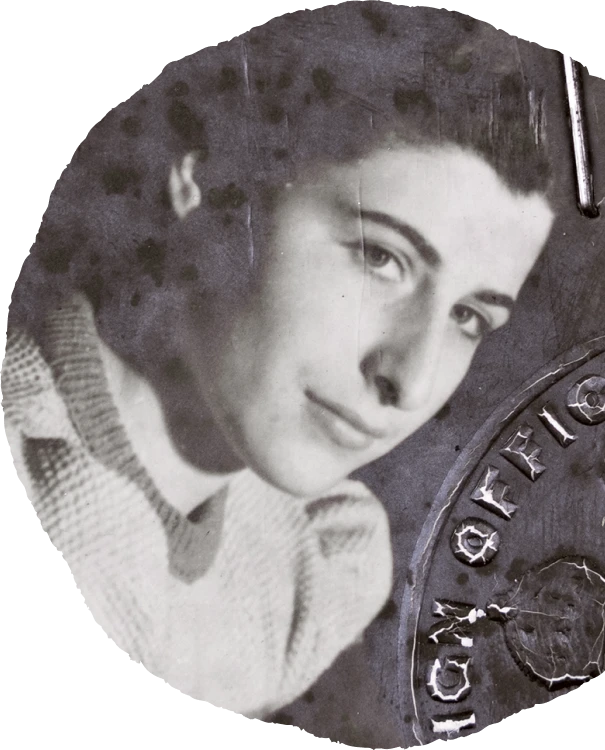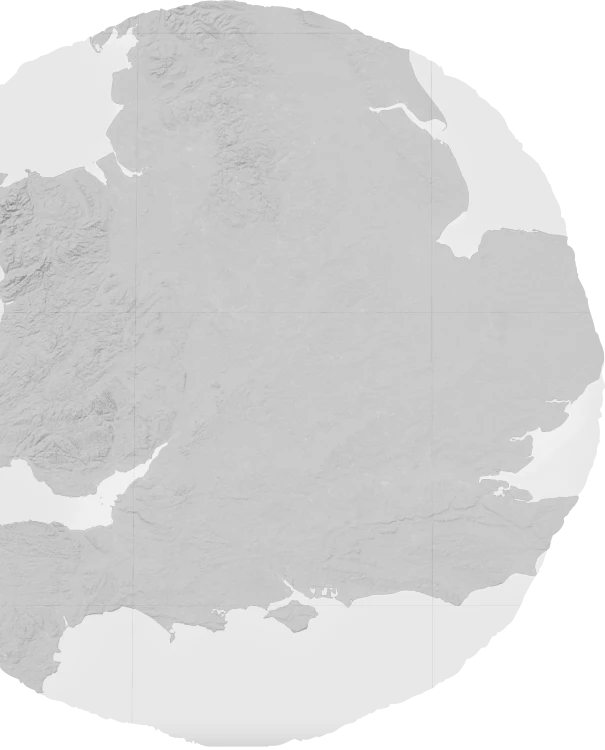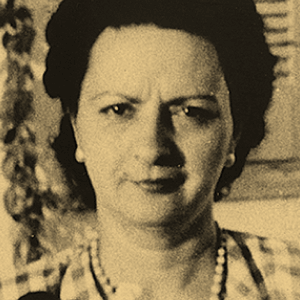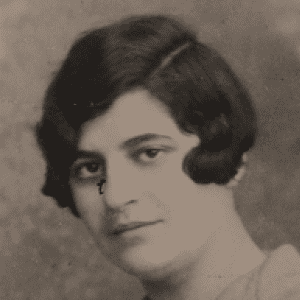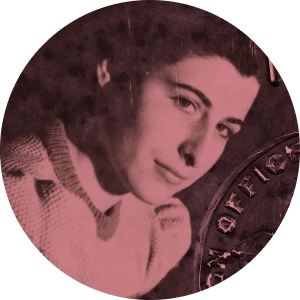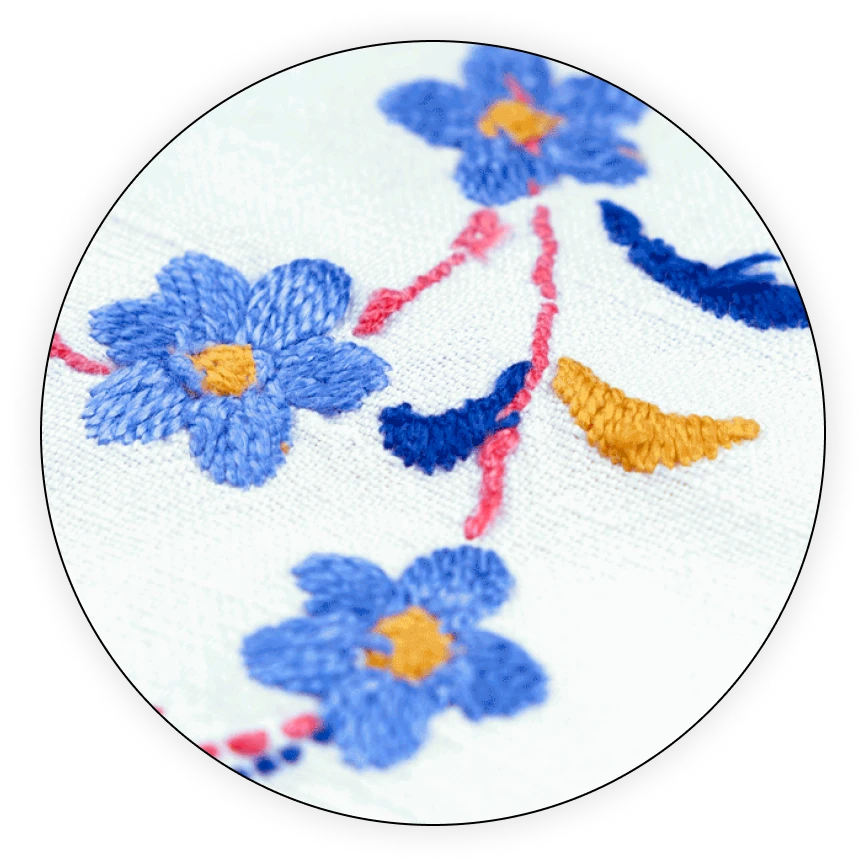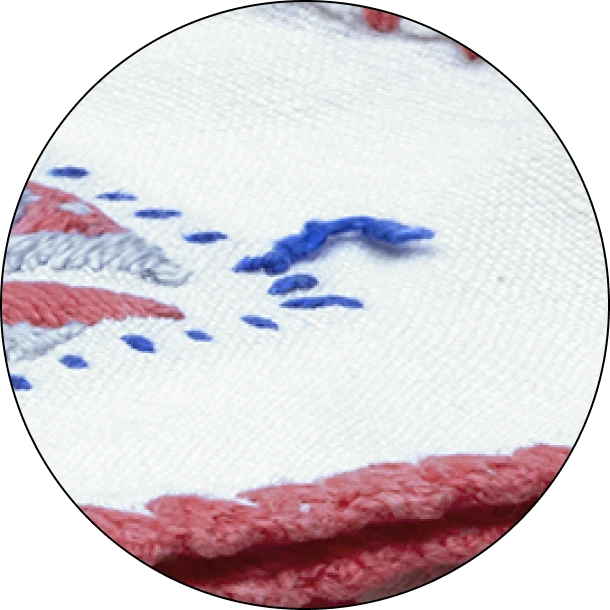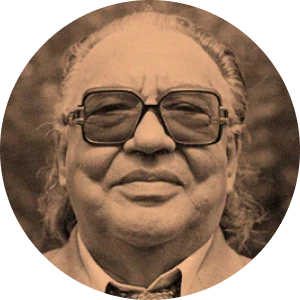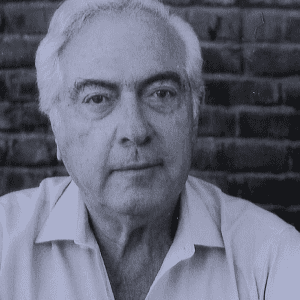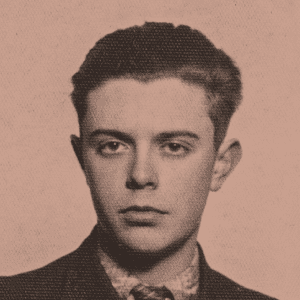This doll belonged to Ellen when she was a child, and it was one of the few items that she took with her to England on the Kindertransport.
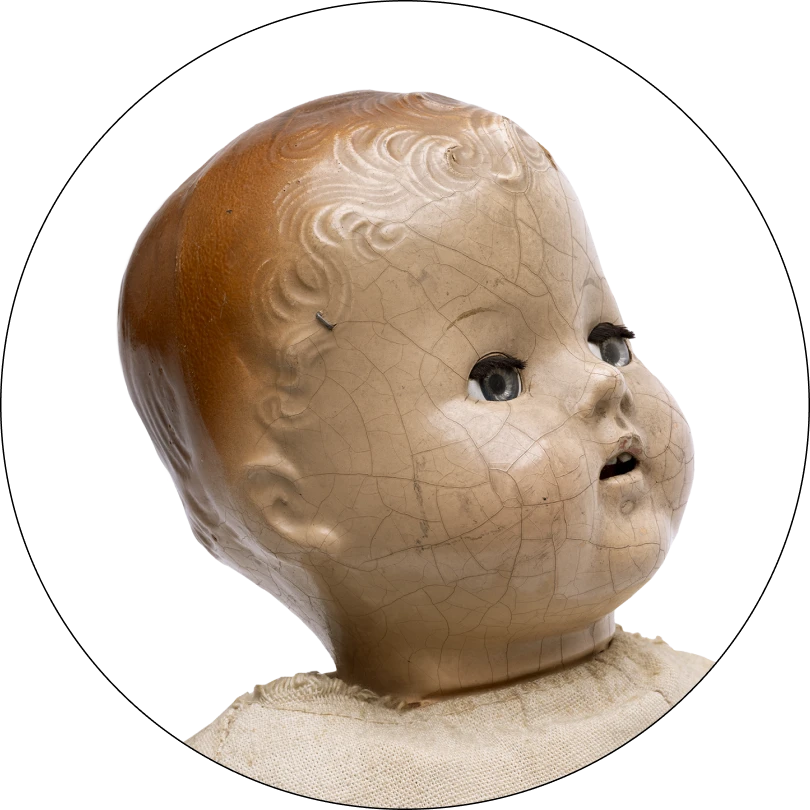
It has cracks on its ceramic face, stains on its cloth body and is very fragile. The condition of the doll is a sign of its own journey and Ellen’s love. It may have provided comfort to Ellen as she was forced to flee and travel to England without her family.
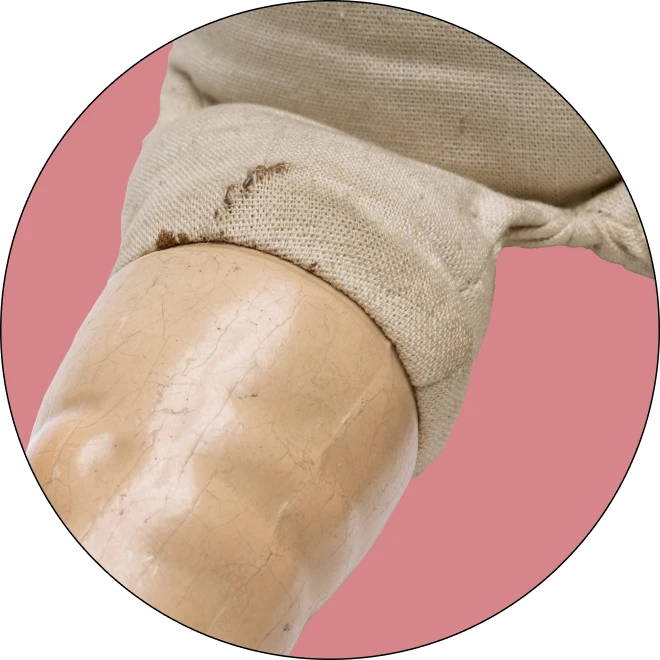
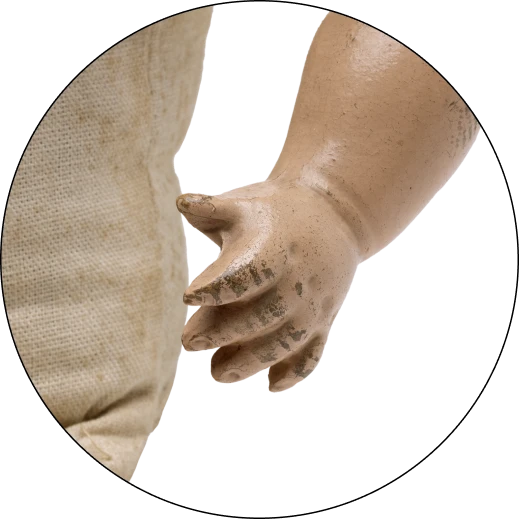
These three pieces of silver cutlery are from a set that was owned by Ellen’s family in Germany. The cutlery was sent to America to be housed with relatives for safekeeping. Ellen’s parents hoped that an affidavit would arrive from family members residing in the US to ensure the family’s safe passage to America. It wasn’t processed in time and the family were unable to escape. After the war, the items were retrieved from America.
These, along with the other artefacts, were donated to the National Holocaust Centre and Museum during Ellen’s lifetime.
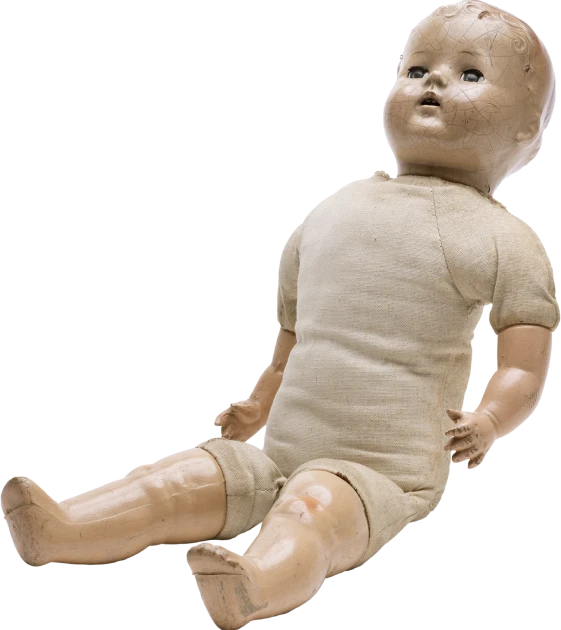



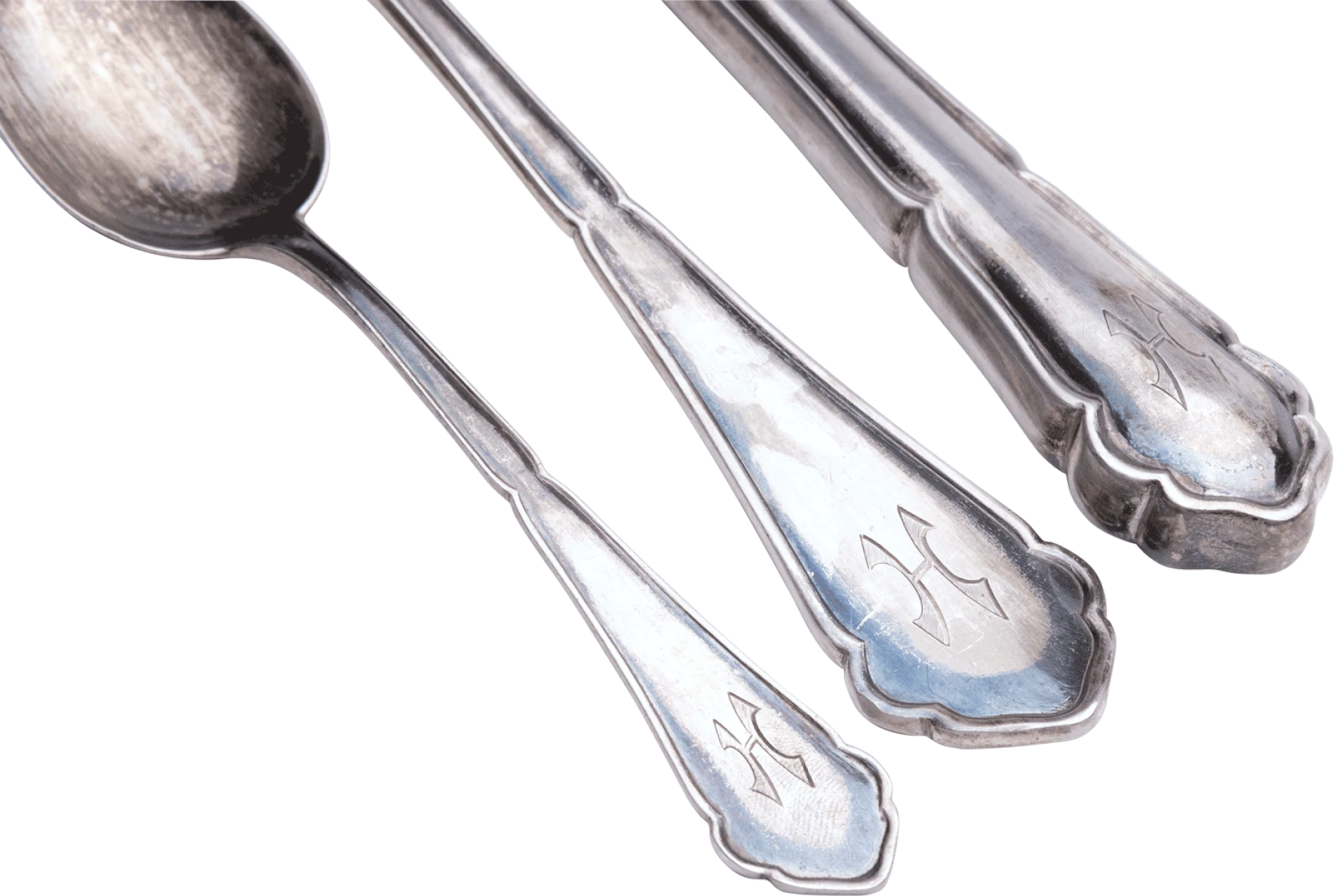

for Herrmann on its handle.
This cutlery is engraved with the letter ‘H’ for Herrmann. The cutlery is embossed with the number 800 with a crescent and a crown meaning it is real silver. The Herrmann family owned a successful business in Königsberg and were upstanding members of the Jewish community. Ellen remembered being laughed at when she came to the UK because the table manners were different.
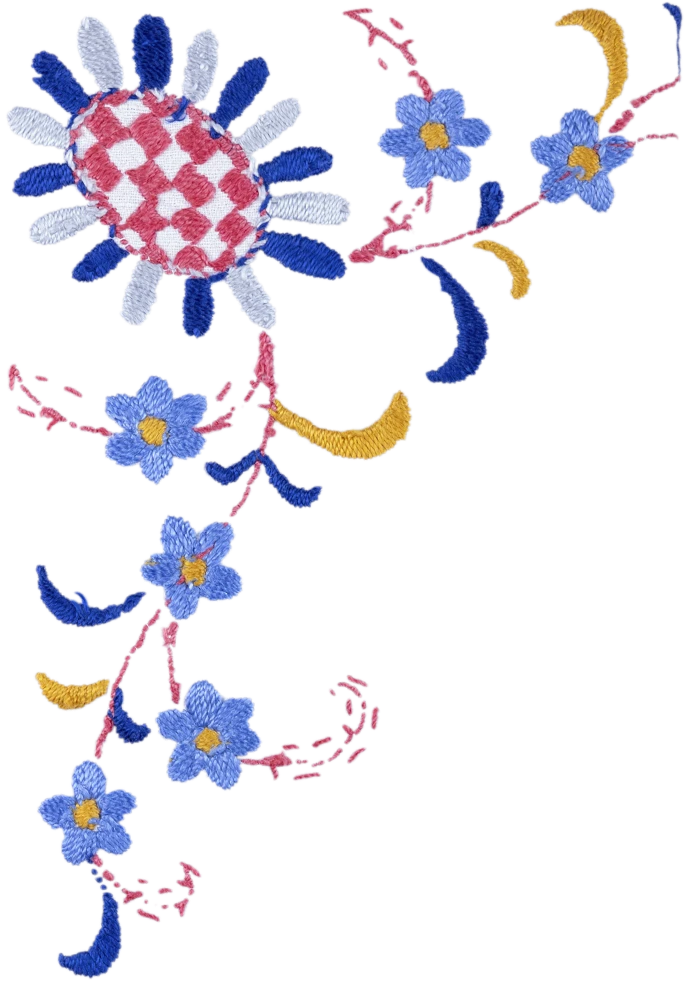
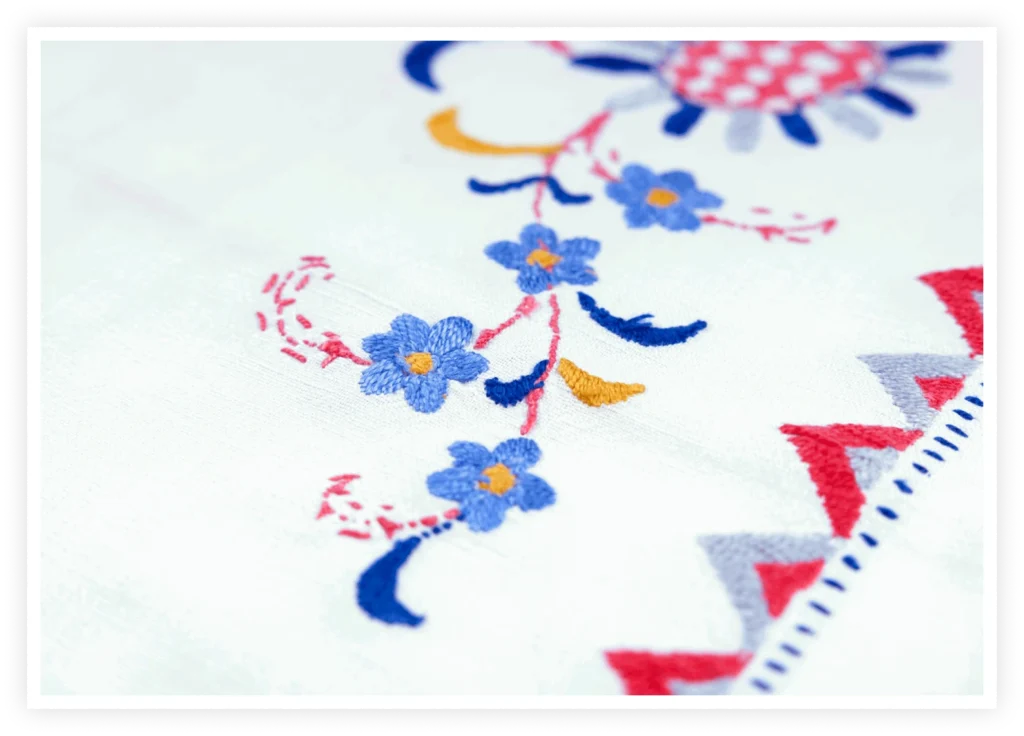
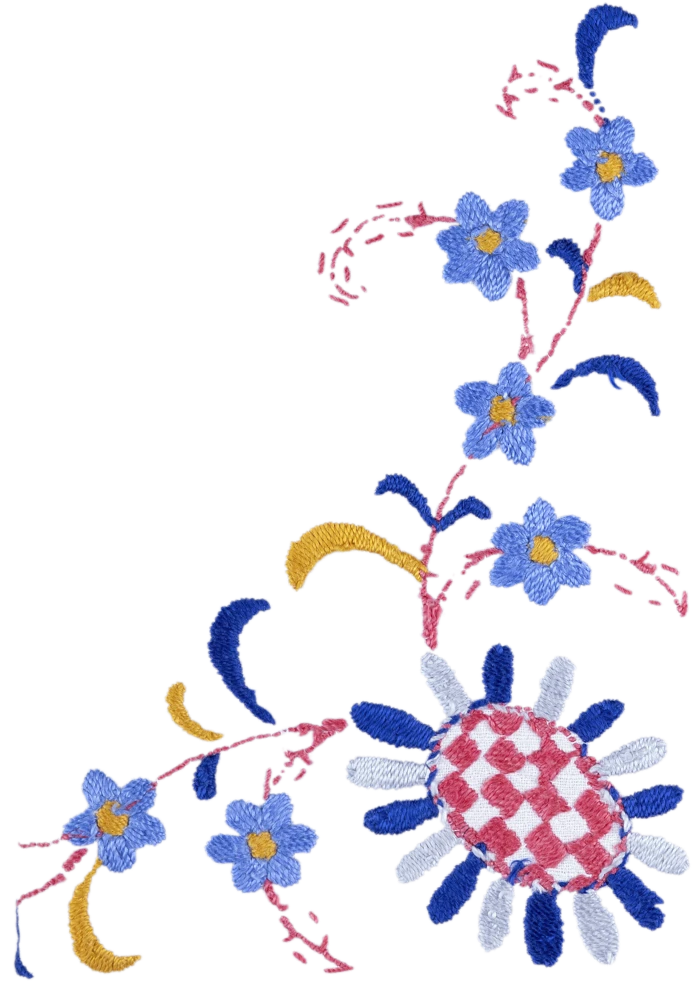
This tablecloth was given to Ellen by her mother, who had embroidered it. It was Ellen’s favourite.
The tablecloth was sent, along with the cutlery, for safekeeping in America. After the war, the item was retrieved from America.
We always used to have a big embroidered cloth on the table. She used to sit for hours and hours to make it.
